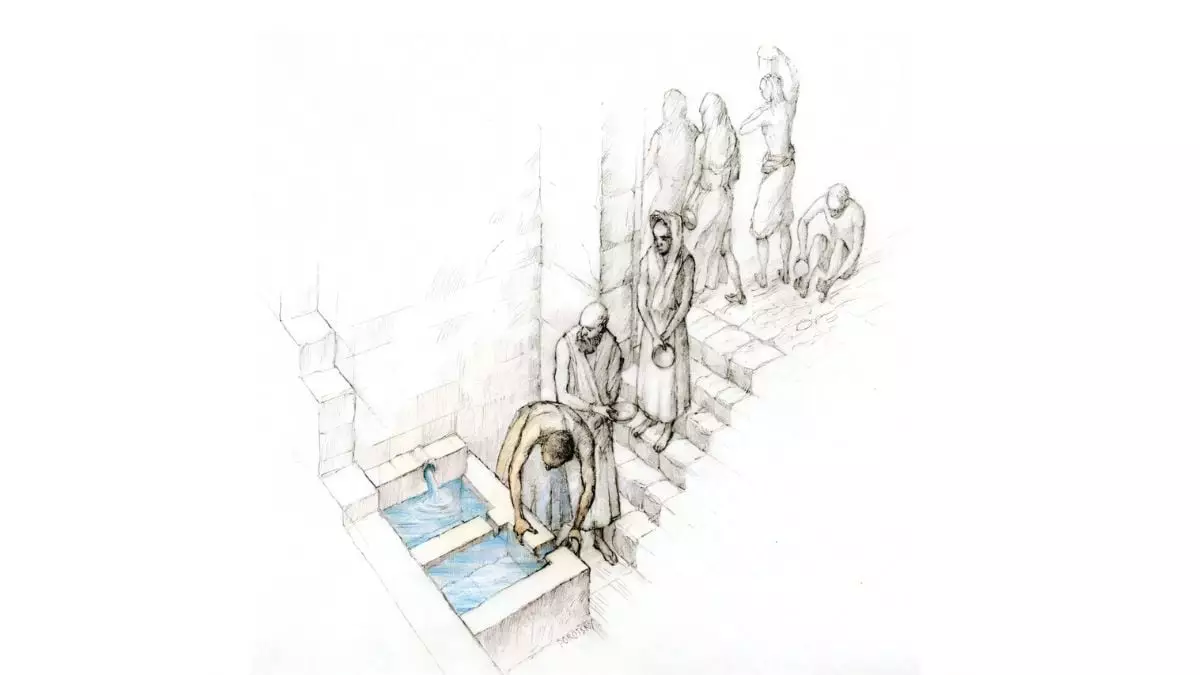Recent archaeological explorations in northern Israel have unveiled a remarkable sanctuary that offers fresh insights into the religious practices of the ancient kingdom of Israel. This site isn’t just another interesting find; it signifies the profound connection between ritual cleansing and spiritual life in Near Eastern societies. Comprising a thoughtfully constructed bathhouse, intricately designed for priestly use, this affected space invites us to reconsider the depth and complexity of ancient ritualistic practices tied to their city-based deities.
Ritual Baths: More Than Just Cleansing
The discovery of two distinct bathing areas, one adorned with yellow plaster and the other with blue, suggests that ritual purification was not merely about physical cleanliness. Instead, these spaces may have represented a liminal zone where corporeal and spiritual realms met. The cold, flowing spring water from nearby sources hints at an intimate encounter with nature, one that perhaps reflects ancient beliefs surrounding the life-giving force of water. It’s fascinating to think that worshippers might have stood in the basin, connecting their own bodies to the sacred waters flowing from the Jordan River, capturing the essence of their faith in tangible form.
Unraveling Cultural Layers
The sanctuary’s possible identity as a site of worship dedicated to an obscure deity adds yet another layer of intrigue. This uncertainty regarding the deity’s name, as illuminated by Dr. Levana Tsfania-Zias, suggests that spiritual identity in the ancient Near East was multifaceted and fluid. Language, often a pivotal tool for understanding culture, may not offer the clarity we seek; instead, it presents us with a tapestry woven from various customs and rites. The very existence of diverse linguistic inscriptions, including Greek and Aramaic, indicates that Tel Dan was a crossroads of faith and belief, appealing to both locals and distant pilgrims alike.
From Ancient Glory to Modern Revelation
After the destruction of the first temple by the Seleucids, the sanctuary underwent transformation yet again, prompting the construction of a second temple that maintained the ritual bathing practices. This continuity reflects a remarkable resilience within the sacred space, analogous to how faith can withstand the test of time despite political upheaval. Graffiti on the walls and remnants of primitive clay vessels evoke a sense of shared experience among ancient worshippers, who may have found solace and cleansing in the rituals described in biblical texts.
A Center for Spiritual Exchange
What makes this discovery even more compelling is its potential to serve as a beacon of spiritual exchange. Evidence of imported ceramics speaks volumes about the site’s regional significance as a sanctuary that embraced diversity and inviting a wider audience. The multilingual inscriptions found at the site challenge us to imagine a community rich in tradition and inclusive in its worship practices—a far cry from the exclusive theological strife often chronicled in ancient histories. Thus, Tel Dan represents not simply a lost sanctuary but a vibrant hub of religious sentiment, one that still echoes in the modern-day longing for connection and meaning.
This excavation continues to be a captivating reminder of the confluence of faith, culture, and community—a mosaic of human experience that challenges us to reassess our narratives about the past. It invites us to wonder what other forgotten deities or lost practices might yet emerge from the shadows as we delve deeper into this archaeological treasure trove.


Leave a Reply